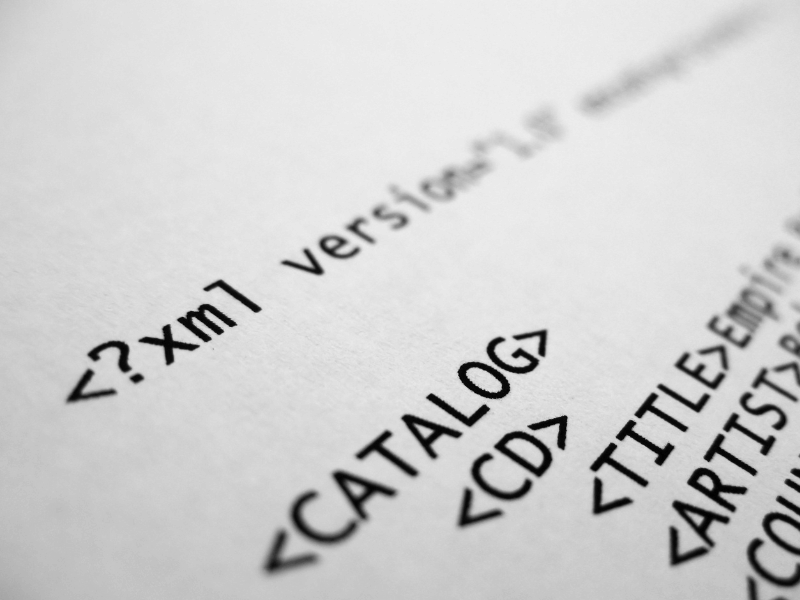The FHIR format is an essential aspect of the FHIR standard, which enables modern-day healthcare data exchange.
Read on to learn what the FHIR format entails and why it is crucial for any organization looking to improve their healthcare system interoperability.
Table of Contents

What Is the FHIR Format?
The FHIR format, part of the Fast Healthcare Interoperability Resource (FHIR) standard, defines how healthcare data is represented. Currently, there are three FHIR resource formats: JSON (JavaScript Object Notation), XML (eXtensible Markup Language), and RDF (Resource Description Framework) Turtle.
- JSON is a data interchange format that’s easy for both humans and machines to understand. It’s usually used to exchange data between a server and a web app.
- XML is a markup language that organizes data with special symbols, akin to grammar rules in language. It’s widely employed in web development and data exchange.
- RDF is a standard model for representing and exchanging web data, with Turtle being a syntax for expressing RDF data.
These formats act like languages computers use to understand and swap information. JSON and XML are used extensively in software development, web development, and other fields for data communication. If computers need to exchange information, they often use either JSON or XML.
Which FHIR Format Should I Use?
The FHIR standard allows you to choose which format to implement, but you are encouraged to support both XML and JSON for interoperability purposes. The RDF format, while supported, is noted for its different benefits, primarily around data analysis rather than exchange.
Moreover, other bulk data formats (ND-Json, Google Protobuf, and Apache Parquet/Avro) are being considered in the FHIR standard. Future versions of FHIR may implement these draft formats if they are found suitable.

What Is FHIR, and Why Is the FHIR Format Necessary?
The FHIR standard, developed by the nonprofit organization Health Level Seven International (HL7), provides the rules for electronic healthcare data exchange. Modern-day healthcare web apps and computer systems exchange complex and vast amounts of information. For example, electronic health records software can now connect to laboratory platforms. FHIR ensures that different apps and systems communicate effectively while maintaining data accuracy and integrity.
It also defines the rules for representing healthcare data, including how the data is serialized or formatted for exchange. FHIR resources are serialized into either JSON or XML format for exchange between systems. These formats organize and give structure to healthcare information, simplifying data exchange and ensuring data consistency across implementations.
Benefits of Implementing FHIR Formats
Here are the benefits of implementing FHIR formatting in healthcare data exchange:
Promotes interoperability between apps and computer systems
A standardized FHIR format promotes interoperability among different web apps and computer systems. When these apps and systems use the same format, they can exchange data more smoothly regardless of the technology or platform they’re built on.
For example, a hospital’s EHR system, which uses the FHIR-compliant JSON format, can seamlessly exchange patient data with a specialist’s telemedicine platform, which supports the FHIR-compliant XML format. This interoperability is especially helpful during virtual consultations.
Ensures consistency in healthcare data
A standardized format for FHIR ensures data is consistently structured and interpreted across different FHIR implementations. This consistency reduces errors in data exchange and makes it easier for developers and users to understand and work with FHIR resources.
For example, a healthcare network with multiple clinics and hospitals may implement a FHIR solution using JSON format for sharing patient demographics. The patient’s demographic data is consistently structured and interpreted regardless of the clinic or hospital.

Makes implementation easier
Thanks to the predefined formats, developers can quickly and easily build apps and systems that comply with FHIR. When creating software or systems that use FHIR, developers don’t need to figure out how to structure the data. Instead, they can follow the established FHIR format, which provides clear specifications for structuring healthcare data.
For instance, a healthcare startup may develop a mobile health app that tracks patient medications. By using a standardized FHIR format, developers can quickly integrate the app with EHR systems used by healthcare providers.
Supports the FHIR ecosystem
Adopting standardized FHIR formats ensures that FHIR resources are compatible with existing tools, libraries, and ecosystems that support JSON, XML, and other future FHIR formats. This compatibility enables the FHIR community to collaborate and innovate. Developers can use existing resources and build upon each other’s work.
For instance, a health IT company may develop a FHIR-compliant data analytics platform for population health management. Developers within the FHIR community can use the shared resources, such as profiles and formats that the company used to accelerate their own app development.
Implementing FHIR Format in Healthcare Systems
FHIR solutions encompass a variety of software applications and systems that exchange large amounts of healthcare data. Moreover, developers use FHIR standards to create new software for the healthcare industry. These scenarios make using standard FHIR formats important in healthcare.
Using standardized FHIR formats has multiple benefits. Interoperability, consistency, software implementation, and healthcare innovation become easier. Ultimately, these benefits contribute to better patient care, improved healthcare outcomes, and greater efficiency in healthcare delivery.







